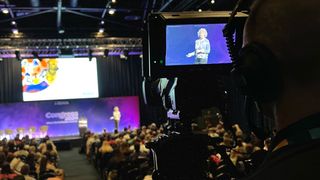Highlighting the Impact of Illumination Methods on the Art of Film Projection Mapping Techniques
Highlighting the Impact of Illumination Methods on the Art of Film Projection Mapping Techniques
Blog Article
Motion projection mapping is an exciting creative form that merges technology and innovation to transform ordinary spaces into extraordinary sight displays. This method involves casting images and footage onto three-dimensional elements, such as buildings, artworks, or stages. One of the key significant elements in producing successful mapping is the use of efficient lighting methods. Proper lighting improves the visual components of the display and ensures that the visuals are clear and captivating. This article examines the influence of lighting methods on video mapping and how they can elevate the overall encounter.
Lighting plays a crucial part in motion mapping because it sets the mood and tone of the display. Different lighting techniques can elicit various emotions and responses from the viewers. For example, using soft, warm lights can create a welcoming atmosphere, while vivid, cool illumination may create a more dynamic or dramatic impact. By thoughtfully choosing illumination hues and brightness, artists can influence how audience interpret the projected images, leading to a more immersive experience. The balance between projection brightness and ambient light is essential, as it can significantly affect the clarity and effect of the images.
In addition to, hue and brightness, the angle of illumination also affects the efficacy of mapping. Illumination from different directions can generate contrast and accents that introduce dimension to the projected images. This technique, known as chiaroscuro, can enhance the three-dimensionality of the objects being mapped. Additionally, using dynamic illumination can introduce dynamism to the display, making the encounter more engaging for the audience. When the light interacts with the projected visuals, it can create an illusion of motion and change, capturing the viewers' focus.
Another important element of illumination in mapping in the use of unique features. Techniques such as gobo lighting, which employs shapes and forms to project light, can visit the site introduce depth and intricacy to the mapping. This approach enables creators to superimpose images and create visually stunning effects that complement the mapping. Moreover, adding laser lights or light-emitting diode lights can additionally improve the exhibit, providing a distinct mix of visual elements that draw the audience in. These special features, when used carefully, can transform the projection into a basic show to an immersive piece of art.
In conclusion, the impact of lighting techniques on motion projection is profound. By understanding how various illumination components connect with mapped images, artists can create captivating you can try these out encounters that connect with audience. The careful selection of color, intensity, angle, and unique effects allows for a rich canvas of sight narrative. As technology continues to grow, the options for artistic expression in projection will only grow, making lighting an increasingly vital aspect in this progressive art form.